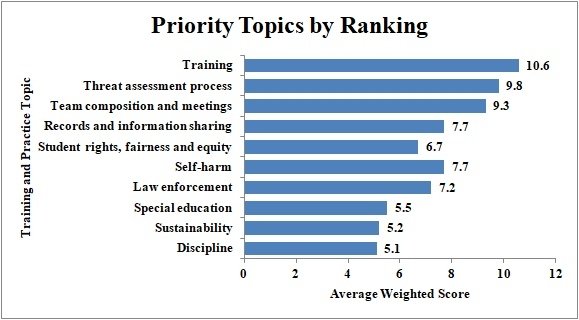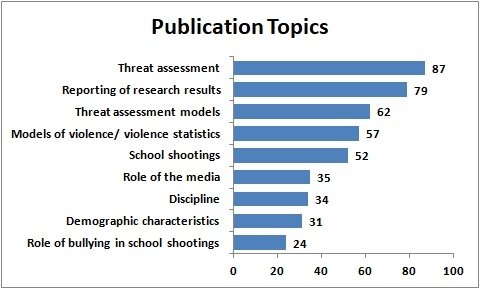Cadre of Experts
We have recruited a national cadre of 219 experts in K-12 threat assessment. This diverse, multidisciplinary group of experts includes practitioners, trainers, and researchers. They are helping us to identify recommended practices and standards for school threat assessment. Experts are completing a series of surveys on key K-12 threat assessment issues such as training standards. We share survey results on a regular basis.
Our first survey was completed in May-June 2020. It assessed the background and qualifications of the experts and asked them to rank priorities for K-12 threat assessment. From a curated list of topics, the experts identified quality and quantity of school team training as the top priority in the field, followed by delineation of the threat assessment process, including how referrals are obtained and how comprehensive the assessment should be. The full report is available (pdf).
Our next survey is underway and will help build consensus on training and practice standards for K-12 school threat assessment.
School Threat Assessment Literature Resources
We have created an annotated list of 139 books, chapters, journal articles, and reports concerned with school-based threat assessment and/or school shootings published between 1995 and 2020.
School Threat Assessment and Shootings Bibliography: All 139 publications with citation, link to document and abstract.
Databases Measuring School Violence: Databases containing measures of school violence.
Summary of Literature
To see how we collected publications for inclusion and categorized them, download Threat Assessment Literature Review Methods (pdf). These 139 publications include peer reviewed journal articles (71%), organization/government reports (17%), books (5%), book chapters (5%) and other printed resources (1%). While the majority of the publications discussed research and practices relevant for elementary and secondary levels (84%), several focused on secondary schools (15%). Several of these publications (13%) provide insight into international practices and perspectives, but the majority (87%) focus on U.S. educational practices.


